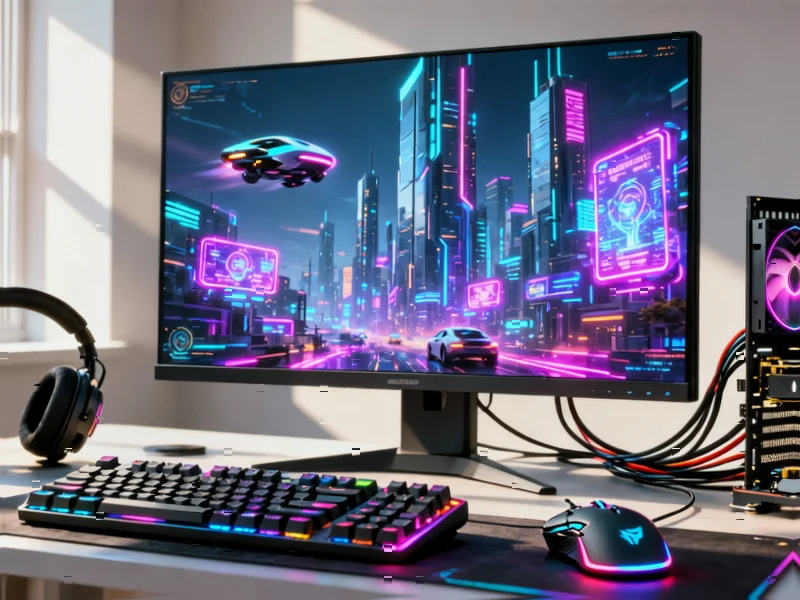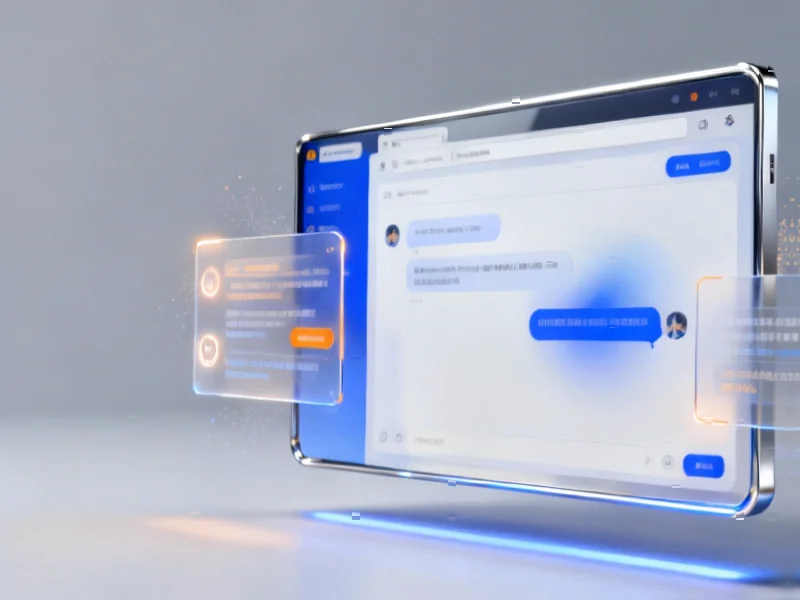According to KitGuru.net, Nvidia is celebrating 25 years of GeForce at the GeForce Gamer Festival in South Korea this week, where several major gaming announcements were made. KRAFTON showcased PUBG Ally, an AI-powered co-op partner using Nvidia ACE technology that will be available for limited testing in 2026 for PUBG: Battlegrounds Arcade. NCSoft presented two upcoming games: AION 2 launching in Korea and Taiwan this November with global release planned later, and Cinder City, an open-world tactical shooter scheduled for 2026. Additionally, four games are launching with DLSS technology this week including ARC Raiders and Battlefield REDSEC with day-one DLSS 4 support, while Duet Night Abyss launches worldwide with DLSS 4 and Directive 8020 arrives in early 2026 with full RTX technologies. These developments signal a significant evolution in how AI and graphics technologies are transforming gaming experiences.
Table of Contents
The Quiet Revolution in On-Device AI Gaming
The most significant development here isn’t just another graphics upgrade—it’s the strategic deployment of on-device Small Language Models through Nvidia‘s ACE technology. While cloud-based AI has dominated conversations, Nvidia is betting heavily on local processing for gaming AI companions. This approach addresses critical latency issues that make cloud-based AI impractical for real-time gaming interactions. The PUBG Ally test in 2026 represents what could become the industry standard: AI companions that learn from individual player behavior without constant internet dependency. The implications extend far beyond PUBG—this technology could revolutionize how NPCs interact across RPGs, strategy games, and even educational software.
DLSS 4’s Strategic Market Positioning
Nvidia’s timing with DLSS 4 rollout is strategically brilliant, coming at a moment when competitors are still struggling to match DLSS 3 performance. The simultaneous launch across multiple game genres—extraction shooters, battle royale, and tactical games—creates immediate market saturation that makes DLSS 4 the de facto upscaling standard. More importantly, the inclusion in free-to-play titles like Battlefield REDSEC ensures massive adoption regardless of hardware budgets. This isn’t just about better graphics; it’s about establishing an ecosystem where developers must prioritize Nvidia technologies to remain competitive. The 2026 timeline for Directive 8020 with full path tracing suggests Nvidia is already planning two generations ahead while competitors play catch-up.
The Korean Gaming Industry’s Strategic Alignment
The choice of South Korea for these announcements is no accident—it represents Nvidia’s deepening partnership with NCSoft and KRAFTON in a market known for both gaming innovation and early technology adoption. South Korea’s advanced internet infrastructure and gaming culture make it the perfect testing ground for these AI and graphics technologies before global rollout. The phased release strategy—starting with Korean and Taiwanese markets for AION 2 before global expansion—shows sophisticated market testing that minimizes risk while maximizing regional expertise. This approach could become a blueprint for how Western gaming companies approach Asian markets with complex technical requirements.
The Unspoken Technical Hurdles
While the announcements are impressive, several significant challenges remain unaddressed. On-device SLMs require substantial local processing power that may limit adoption to higher-end systems initially. The AI training data collection from the 2026 PUBG Ally test raises questions about privacy and data usage that the industry hasn’t fully resolved. Additionally, the transition to path tracing in Directive 8020 suggests hardware requirements that could price out mainstream gamers for several generations. There’s also the question of how these technologies will scale across the massive PUBG Mobile ecosystem where hardware capabilities vary dramatically.
Broader Industry Implications Beyond Gaming
What’s happening here extends far beyond gaming. Nvidia is effectively creating a testbed for AI-human interaction technologies that could revolutionize customer service, education, and even healthcare simulations. The on-device SLM approach addresses critical privacy concerns that have hampered cloud AI adoption in sensitive applications. If successful, the gaming industry becomes the proving ground for AI technologies that will eventually permeate every digital interaction. The 2026 timeline gives Nvidia a three-year head start to refine these technologies before they likely become industry standards across multiple sectors.



